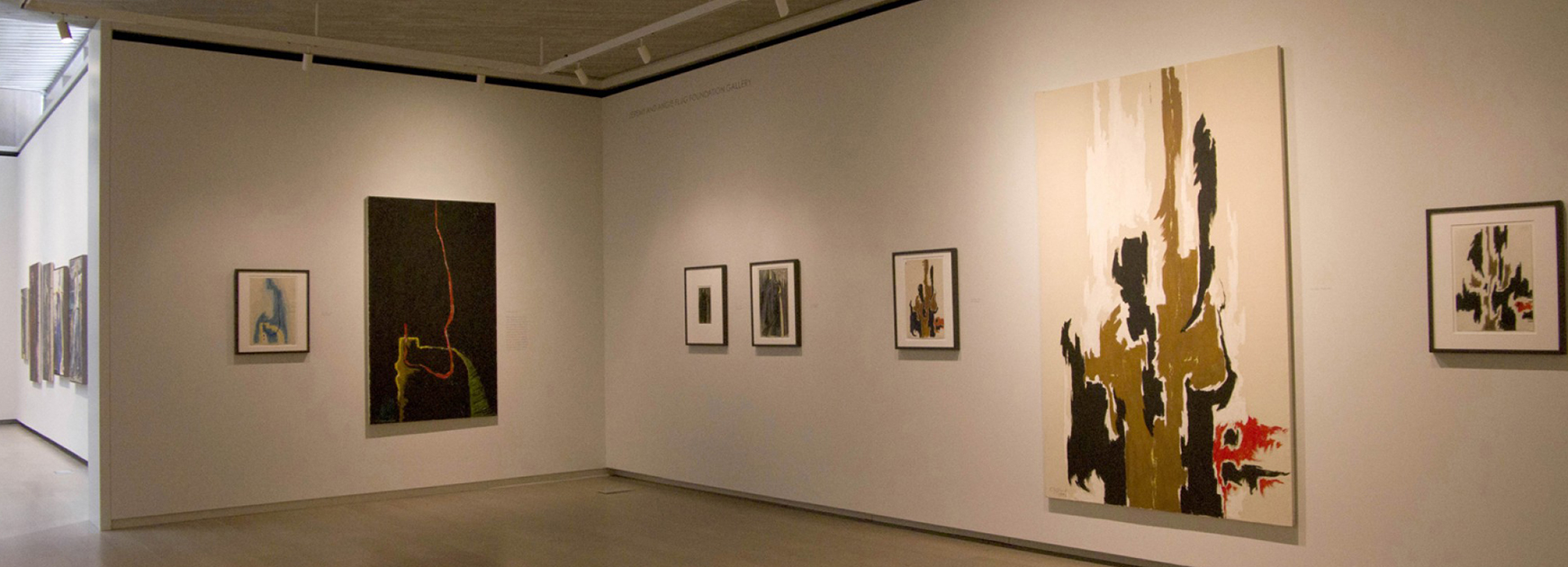Museum Debuts New Exhibition to Explore Artist’s Relationship Between Works on Paper and Major Paintings
Denver, CO – October 9, 2013 – The Clyfford Still Museum announced today its newest exhibition, DRAWING/PAINTING/PROCESS, to explore the relationship between Still’s paintings and drawings. This special exhibition opened on October 4, 2013 and continues through February 9, 2014. Co-curated by the Museum’s Director, Dean Sobel, Senior Consulting Curator, David Anfam and Bailey Harberg,
Collections Manager, this museum show is the first to unite Still’s works on paper with those on canvas, examining the complex relationship between his paintings and the often closely related drawings.
With more than 2000 graphics in the collection, Still‘s works on paper offer key clues and insights for the sources of imagery presented in his oils. In some cases, paintings grew directly from sketches or more highly finished drawings, while the opposite was also true—underscoring the fact that Still’s works on paper were not only preparatory sketches, but could also be fully realized compositions in their own right.
“Experiencing these manifest yet subtle connections and shaping this exhibition has been one of the most enlightening discoveries made in the Clyfford Still
Museum’s first years,” said Dr. Anfam. “Still’s lifetime exhibitions did not include any of these vastly diverse drawings. Indeed, they had remained virtually unseen and unknown until the Museum’s opening in 2011. Visitors now have the unprecedented opportunity to explore how Still used an extraordinary image bank of ideas throughout his career—transforming them across different media in an intensive, unfolding creative process.”
The Museum’s collection contains works on paper realized in graphite, charcoal, pastel, crayon, pen and ink, oil paint, gouache (an opaque watercolor medium), and tempera (pigments bound with egg yolks and water), as well as photographs, limited-‐edition etchings, woodcuts, and silkscreen prints.
The dialog between Still’s paintings and drawings is particularly fertile in his later output. After moving to Maryland in 1961, Still created nearly 1,000 pastels, mostly on colored construction paper. In addition to various compositional affinities between the later paintings and drawings, these pastels exemplify how new expressive approaches to line, color, and space—that Still first initiated on paper— informed the subsequent pictorial breakthroughs in his large-‐scale canvases.
In this selection, the richness of the Clyfford Still Museum’s Archives also comes into view. For example, small annotated studies of human skulls and bones found within an anatomy book doubtless played a role in Still’s larger charcoal drawing of 1931 featuring a skull, as well as in other evolving visual leitmotifs during the 1930s. The installation numbering 71 pieces also includes a diminutive early photograph of a farm laborer taken by Still. This became the germ for an entire sequence of much bigger conceptions in oil on canvas over the ensuing two decades.
Like the Old Masters whom Still studied and revered, DRAWING/PAINTING/PROCESS reveals the artist as a consummate draftsman among the Abstract Expressionists.
About The Clyfford Still Museum
The Clyfford Still Museum was founded to promote public and scholarly understanding of the late artist’s work and legacy, through the presentation and preservation of the Clyfford Still and Patricia Still estates, donated to the City of Denver in 2004 and 2005 respectively, and totaling approximately 2,400 artworks. Considered one of the most important painters of the twentieth century, Still (1904 – 1980) was among the first generation of Abstract Expressionist artists who developed a new, powerful approach to painting in the years immediately following World War II. The Stills’ estates—now understood to contain nearly 95 percent of the artist’s total output—as well as his extensive archives, were sealed off from the public from 1980 to 2011.
The museum is in the heart of the city’s Civic Center Cultural Complex. For more information about the Clyfford Still Museum, please visit www.clyffordstillmuseum.org, find us on Facebook or follow us on Twitter.
